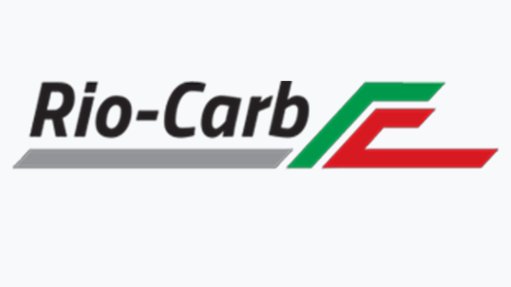Association notes Canadian mining challenges and possible solutions
The Canadian mining industry can face challenges effectively if they are dealt with correctly, says Mining Association of Canada president and CEO Pierre Gratton.
Canada’s mineral production reached a record $50.3-billion in 2011, but declined to $46.9-billion in 2012, owing to falling commodity prices. However, Gratton notes that, historically, these are still high prices.
“The industry’s trade levels also increased significantly, with exports growing by 20% to $101.9-billion in 2011, or 23% of Canada’s overall total. Across Canada, there are new major investments totalling $140-billion over the next five to ten years.
“To keep Canada competitive, we need to maintain low inflation, reduce debts, reduce and eliminate government deficits, as well as preserve and improve competitive tax levels,” he explains.
Gratton says the country needs to ensure that government does not erode its ability to attract investment by taking action on three broad public-policy fronts – “regulatory, people and infrastructure”.
With respect to regulatory reform announced by the federal government in 2012 aimed at streamlining the project review and permitting process, Gratton states the association is actively working with government to ensure that the promised reforms result in their intended outcomes, namely efficient and predictable reviews of major projects.
“I am pleased to say that the reforms to the Canadian Environmental Assessment Act (CEAA) have been successful, not only through better legislation but also through application. Federal environmental assessments are much better managed today than they were five years ago,” he states.
Another challenge facing the Canadian mining industry is personnel, he says.
“The Canadian mining industry added 12 000 workers in 2011, totalling more than 320 000 workers in mineral extraction, processing and manufacturing. Owing to a combination of growth and an aging workforce, it is estimated that the mining sector will need about 14 000 new workers a year over the next ten years.
“We are encouraged by recent reforms to Canada’s immigration system, moving Canada from a first come, first serve approach to one that specifically targets and ranks applicants according to the skills required by the country’s economy,” states Gratton.
He says that like a number of other countries, Canada will have to look to other countries to fill some of its skills requirements, but that the country is taking action to meet its human resource requirements.
“Governments, industry, schools, Aboriginal groups and other community organisations are working together to address the sector’s skills training, mobility and immigration needs,” Gratton explains.
Through the Mining Industry Human Resources Council, the mining sector has been partnering with authorities, such as the Assembly of First Nations, Canada’s National Inuit Organisation and the Métis National Council, to develop a range of tools and training programmes to facilitate and accelerate the participation of Aboriginal people in mining.
“In addition to increasing Aboriginal participation in mining, we need to focus on other long-term sustainable solutions such as increasing the number of women in our sector,” says Gratton.
He adds that this will lead to amore sustainable workforce because the industry will have access to a much larger skills pool.
“Major mining companies Xstrata and Rio Tinto have made major commitments to increase the participation of women in their companies, which will pay dividends for years to come,” he notes.
He points out that, this month, a woman is set to chair the Mining Association of Canada for the first time in its history, when Zoe Yujnovich of mining company the Iron Ore Company of Canada will assume this leadership position.
Geographic Challenge
Given the significant prospects for continued growth in mining operations, dealing with Canada’s vast geography to deliver products to ports and smelters in a timely and effective manner is crucial, says Gratton.
This is particularly important, considering that Canada competes against other countries that have significantly shorter supply chains.
“Given the medium- to long-term outlook for global commodity demand, we need to think about how we invest to ensure marine and rail capacity can service the industry effectively.
“This requires strategic investment in infrastructure and measured public-policy decisions, in consultation with stakeholders,” he states.
Growth of the sector can also bring with it heightened public scrutiny and the potential for opposition to new development, says Gratton.
“We will have to ensure that we continue to earn the trust and confidence of Canadians and, particularly, of the communities where we operate. We must also remind Canadians that mining practises the highest environmental standards, with a commitment to sustainable development and production.
“Meanwhile, mining has become one of the safest industries in Canada. Our industry’s environmental and safety achievements can, in part, be attributed to the Mining Association of Canada’s Towards Sustainable Mining (TSM) programme, in which participation is a condition of membership for our association,” he says.
TSM was developed by members of the association to improve the industry’s overall performance in critical risk areas. Gratton says it is the only system in the world that includes site-level performance evaluation, public reporting and third- party verification of results.
“It is also the only system that can provide the public, governments, investors and civil society with a meaningful assessment of how our companies operate, how we manage our risks and how we live up to our responsibilities,” he concludes.
Article Enquiry
Email Article
Save Article
Feedback
To advertise email advertising@creamermedia.co.za or click here
Comments
Announcements
What's On
Subscribe to improve your user experience...
Option 1 (equivalent of R125 a month):
Receive a weekly copy of Creamer Media's Engineering News & Mining Weekly magazine
(print copy for those in South Africa and e-magazine for those outside of South Africa)
Receive daily email newsletters
Access to full search results
Access archive of magazine back copies
Access to Projects in Progress
Access to ONE Research Report of your choice in PDF format
Option 2 (equivalent of R375 a month):
All benefits from Option 1
PLUS
Access to Creamer Media's Research Channel Africa for ALL Research Reports, in PDF format, on various industrial and mining sectors
including Electricity; Water; Energy Transition; Hydrogen; Roads, Rail and Ports; Coal; Gold; Platinum; Battery Metals; etc.
Already a subscriber?
Forgotten your password?
Receive weekly copy of Creamer Media's Engineering News & Mining Weekly magazine (print copy for those in South Africa and e-magazine for those outside of South Africa)
➕
Recieve daily email newsletters
➕
Access to full search results
➕
Access archive of magazine back copies
➕
Access to Projects in Progress
➕
Access to ONE Research Report of your choice in PDF format
RESEARCH CHANNEL AFRICA
R4500 (equivalent of R375 a month)
SUBSCRIBEAll benefits from Option 1
➕
Access to Creamer Media's Research Channel Africa for ALL Research Reports on various industrial and mining sectors, in PDF format, including on:
Electricity
➕
Water
➕
Energy Transition
➕
Hydrogen
➕
Roads, Rail and Ports
➕
Coal
➕
Gold
➕
Platinum
➕
Battery Metals
➕
etc.
Receive all benefits from Option 1 or Option 2 delivered to numerous people at your company
➕
Multiple User names and Passwords for simultaneous log-ins
➕
Intranet integration access to all in your organisation


















